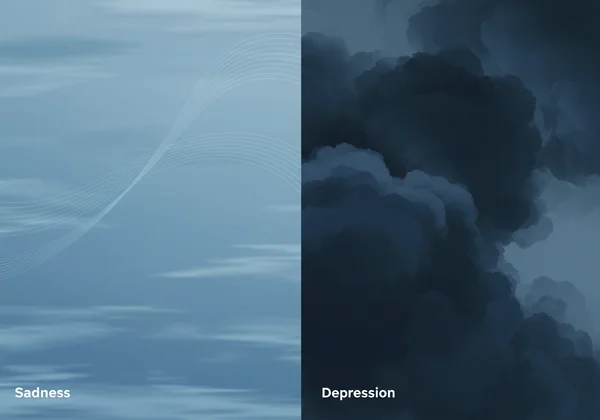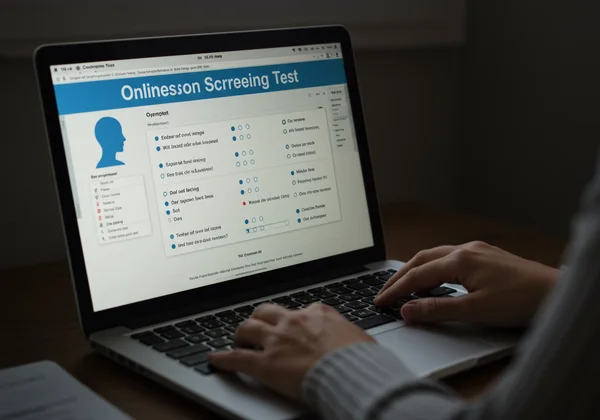Am I Depressed or Just Sad? Take a Depression Test
Feeling down is a universal human experience. We all have days, or even weeks, where the world seems a little grayer. But a lingering question often surfaces during these times: Am I depressed or just sad? Understanding the answer is a crucial first step toward emotional well-being. This guide is here to help you explore the differences, recognize the signs, and discover how a confidential depression test can offer valuable clarity. If you're looking for initial insights, you can get started here.
It's easy to confuse these two states because they share overlapping feelings. However, sadness is typically a temporary and specific reaction, while depression is a more pervasive and persistent medical condition. Distinguishing between them empowers you to take the right steps for your mental health.
The Core Differences: Sadness vs. Depression
At its heart, the difference between sadness and depression comes down to cause, duration, and impact. While one is a fleeting emotion, the other is a complex mood disorder that affects your ability to function. Understanding this distinction is the first step toward self-awareness and healing.

What is Sadness and Why Do We Feel It?
Sadness is one of our most fundamental normal emotions. It's a natural, healthy response to a painful or disappointing situation, such as losing a job, ending a relationship, or grieving a loss. When you're sad, you can usually pinpoint the reason for your feelings.
While intense, sadness is typically tied to a specific trigger. Over time, as you process the event or circumstance, the feeling of sadness gradually lessens. It comes and goes in waves, but you can still experience moments of joy, laugh at a joke, or find comfort in the company of friends. It's an integral part of coping with loss and life's challenges.
Understanding Clinical Depression: More Than Just Feeling Blue
Clinical depression, also known as major depressive disorder, is fundamentally different. It is not just "feeling blue" or a sign of weakness; it is a serious clinical diagnosis. Unlike sadness, depression often has no single, clear trigger and can feel like a heavy, dark cloud that colors every aspect of your life.
This condition is characterized by a persistent mood of emptiness and despair that doesn't go away on its own. It drains your energy, motivation, and ability to feel pleasure. The feelings are constant, lasting for at least two weeks, and they interfere significantly with your daily life, from work and school to relationships and self-care.
Key Signs: Depression vs. Sadness Symptoms
Observing the specific signs is key to understanding what you might be experiencing. The depression vs sadness symptoms manifest differently across emotional, physical, and behavioral realms. Pay attention to how these signs show up in your life.
Emotional and Mental Warning Signs
While sadness is one specific feeling, depression encompasses a wider range of debilitating emotional and mental symptoms. A primary indicator is anhedonia, which is the loss of interest or pleasure in activities you once enjoyed. Hobbies, friendships, and passions that used to bring you joy now feel dull and unappealing.
Other signs include a pervasive sense of hopelessness or pessimism about the future. You might feel worthless, guilty, or empty inside. Concentration becomes difficult, making it hard to read, work, or even follow a conversation. This mental fatigue is often overwhelming and persistent.

Physical and Behavioral Changes to Watch For
Depression isn't just in your head; it profoundly affects your body. Many people experience significant sleep disturbances, either sleeping far too much (hypersomnia) or struggling with insomnia. Similarly, you may notice drastic appetite changes, leading to weight loss or gain.
Behaviorally, a common sign is social withdrawal. You might cancel plans, avoid calls from loved ones, and prefer to isolate yourself. Unexplained aches, pains, headaches, and digestive issues with no clear physical cause can also be manifestations of depression. These physical symptoms are often your body's way of signaling that something is wrong.
Duration and Impact on Daily Life
The most critical factor in differentiating sadness from depression is how long the symptoms last and how much they disrupt your life. A persistent low mood that lasts for two weeks or more is a key diagnostic criterion for depression.
Ultimately, ask yourself: are these feelings preventing you from living your life? If your mood is causing impaired functioning—making it difficult to meet work deadlines, care for your family, maintain personal hygiene, or simply get out of bed—it is a strong indicator that you may be dealing with more than just sadness. An online screening test can help you assess this impact.
When to Take a Depression Test or Seek Help
Knowing when to take the next step is empowering. If you've been struggling with these feelings and questioning your emotional state, it might be time to seek clarity. Deciding when to get help for sadness or persistent low mood is a personal, but vital, decision for your health.
Self-Assessment: Is It Time for an Online Depression Test?
If this article resonates with you, taking a self-assessment is a logical and proactive first step. An online depression test serves as a confidential and accessible free screening tool. It is designed to provide you with an initial assessment based on your current symptoms and feelings.

This isn't a diagnosis, but it provides a snapshot of your emotional health and can help you organize your thoughts. It gives you a baseline understanding of your symptoms' severity, empowering you with information to decide on your next steps. A science-based test can be a valuable resource for self-reflection.
Recognizing When Professional Support is Needed
An online screening can be an excellent starting point, but it's crucial to recognize when professional support is necessary. If you are experiencing severe symptoms, especially thoughts of self-harm or suicide, please seek immediate help from a healthcare professional or a crisis hotline.
Even without severe symptoms, if your mood consistently impacts your ability to function at work, school, or home, consulting a doctor or mental health professional is highly recommended. They can provide a formal diagnosis and discuss treatment options. Remember, seeking medical advice is a sign of strength, not weakness.
Your Next Steps Towards Emotional Clarity
Understanding the nuances between sadness and depression is a key step in safeguarding your mental health. Sadness is a fleeting, specific emotional response, while depression is a persistent, pervasive condition that impacts your entire life. Recognizing the duration, intensity, and impact of your feelings is key to understanding your experience.
If you are still unsure where you stand, you don't have to navigate these feelings alone. Taking a free, confidential, and science-based depression test is a simple yet powerful step toward gaining insight. It can help you better understand your emotional state and provide you with personalized information to guide your journey. Discover your results and take the first step towards a clearer tomorrow.
Disclaimer: This article is for informational purposes only and does not constitute medical advice. The online test is a screening tool and not a substitute for a professional diagnosis. If you are in crisis, please contact a local emergency number or a mental health crisis hotline.
Frequently Asked Questions About Depression Screening
How do I check if I am depressed?
A good first step is to reflect on your symptoms, especially their duration and impact on your daily life. An online screening tool, like the free depression test available on our site, can provide a structured way to evaluate your feelings. It asks standardized questions to give you a preliminary result, which can be a helpful starting point for a conversation with a healthcare provider.
What are the warning signs of depression?
The key warning signs include a persistent low mood for over two weeks, loss of interest in activities you once enjoyed (anhedonia), significant changes in sleep or appetite, overwhelming fatigue, feelings of worthlessness, and difficulty concentrating. You can take a quick depression test to see if you are experiencing these common signs.
What is a depression screening test?
A depression screening test is a questionnaire designed to identify potential symptoms of depression. It is not a diagnostic tool but rather an initial check-up for your mental health. Our test is based on widely recognized psychiatric screening principles (like the PHQ-9) to help you assess your emotional state and decide if further professional evaluation is needed.
How to get tested for depression?
You can start with a confidential online screening like the one offered on our site. For a formal diagnosis, you should schedule an appointment with a healthcare professional, such as a general practitioner or a psychologist. They can conduct a thorough evaluation, discuss your history, and provide an accurate diagnosis and treatment plan.